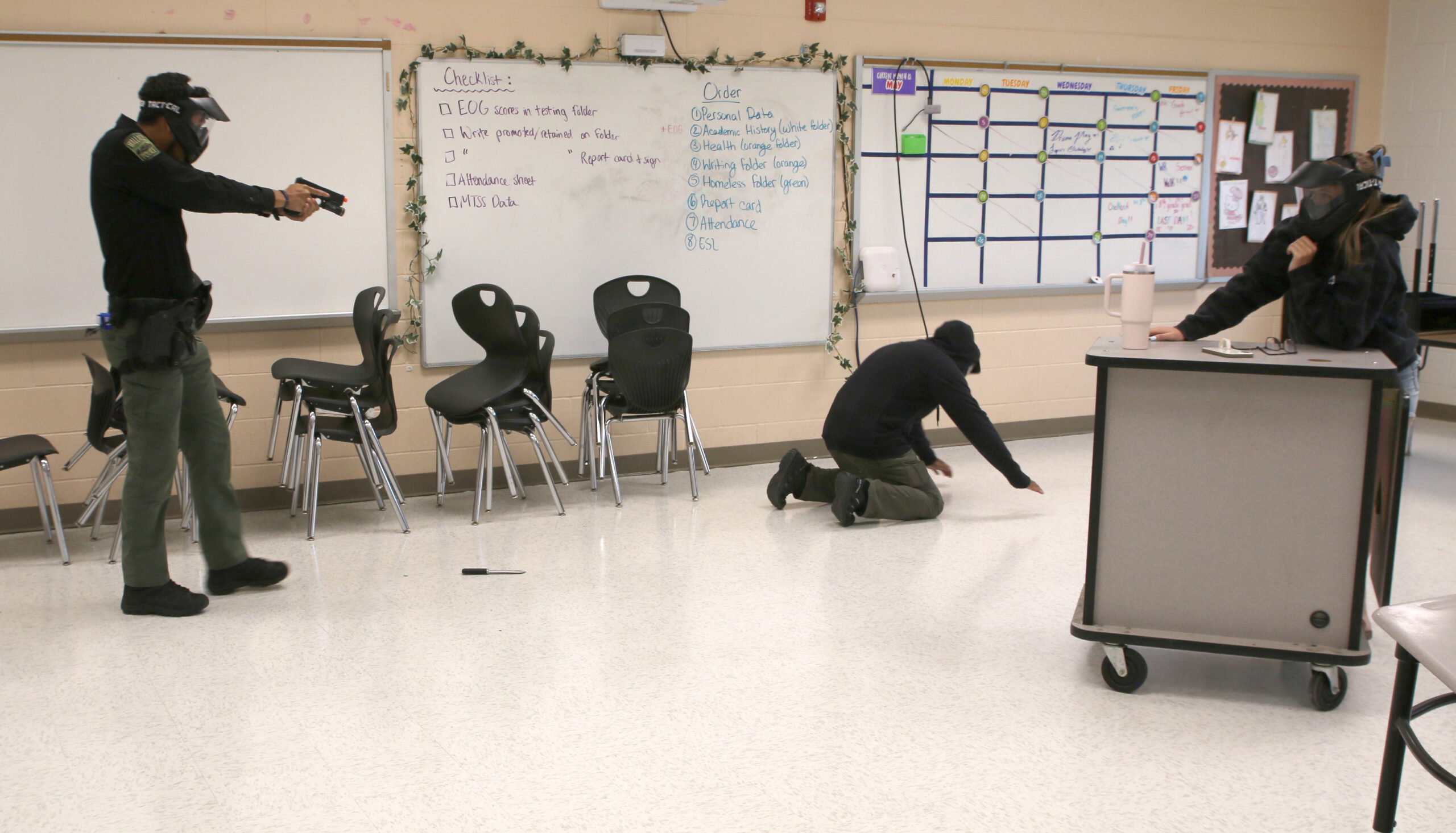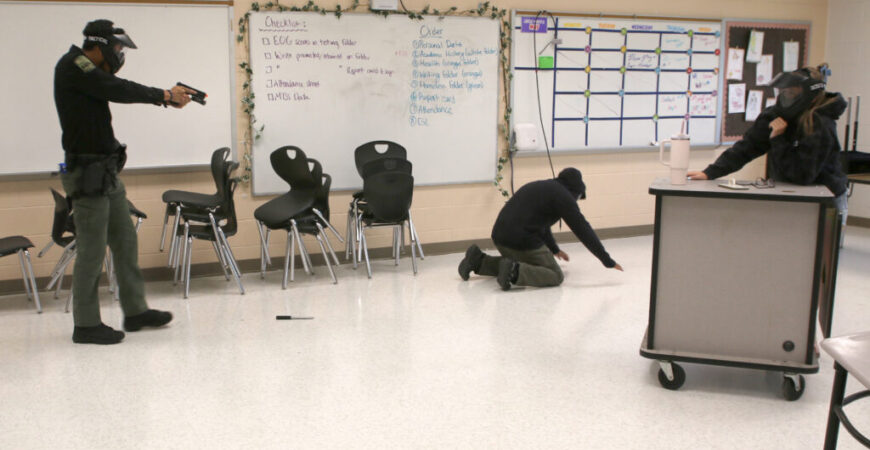WALLACE — A law enforcement officer receives a call to respond to a public location, such as a school, where someone is making threats to others. Often, calls to 911 regarding these situations are quick and without details. That means the officer is walking into a situation blind, not knowing what or who they are about to encounter.
It’s that kind of call Wallace police officers were training for last week at Wallace Elementary School. This training is commonly known as active shooter training, but today it is more frequently referred to as “active threat” training, according to Wallace Police Chief James Crayton.
“What we see across the country, and across the world, is that it’s not always a gun,” Crayton told Duplin Journal. “It could be a knife. It could be a baseball bat. We train at the school because this is where our most vulnerable population is, Monday through Friday. We want to familiarize our guys with this building.”
While the training took place at a school, Crayton emphasized that the training is for anywhere there is an active threat.
“It could be at a home or a business office,” he said. “The tactics and training are applicable across an array of locations.”
Specialized instructors were brought in for the training from the Knightdale and Youngsville police departments. One of the instructors, J.G. Whitley, also serves as chief of police in Youngsville. He told Duplin Journal this type of training evolved out of the Columbine High School shooting in 1999, when two seniors at the school killed 12 fellow students and a teacher.
“There were a lot of mistakes made during Columbine,” Whitley said. “The training at that time was that we contained and controlled the environment, meaning the perimeter of the building. Then we called in a specialized tactical unit, a SWAT team.”
Whitley said that the Columbine tragedy proved that waiting for a SWAT team could be too late.
“What we found out was much of the damage had already taken place before law enforcement got into the building,” Whitley said. “Now, officers are learning to make an initial assessment when they arrive on the scene. If it’s determined a threat exists in the building, they immediately enter.”
Whitley said that in smaller police departments, such as Wallace and Youngsville, this could mean a single officer may have to quickly assess the situation on their own, emphasizing the need for this reality-based training.
Duplin Journal was granted access to observe one of the realistic training scenarios. The officers participating in the training were not informed about the events occurring in a classroom, requiring them to arrive, assess the situation, and determine the best response. In this particular scenario, an armed intruder was threatening a teacher, both portrayed by actors. The intruder was wielding a knife.
After the scene played out, Whitley and Crayton provided feedback to the officers on their responses. They stressed the criteria for justifying the use of deadly force, explaining that such force is warranted only when a person’s life is threatened with serious bodily harm or death.
Whitley said there was also training on when crisis negotiation or de-escalation tactics may be the preferred solution to a threat.
“The goal here is to de-escalate without them having to use force,” Whitley said. “They will be in scenarios (during training) where they will not have to use their weapons and crisis negotiation will save the day.”

Crayton noted that this type of training cannot be effectively conducted in a traditional classroom setting, making scenario-based or reality-based training the most effective approach.
“You can’t do this verbally,” Crayton said. “The skills learned and the skills put to use are invaluable when you do them live-action as opposed to just talking about it. People learn best by doing.”
One of the Wallace police officers in training, Christopher Braswell, emphasized the importance of this type of preparation.
“I think the scenarios are great because it puts you in the mindset as if you are in a real scenario,” Braswell said. “It allows the officer to immerse himself into a real event he may eventually deal with. I think this training is very, very important.”
While everyone hopes the community will never face tragedies like a school shooting or stabbing, being prepared is essential.
“You train for the worst day and hope it never comes,” Crayton said.
 Twitter
Twitter Facebook
Facebook Instagram
Instagram





